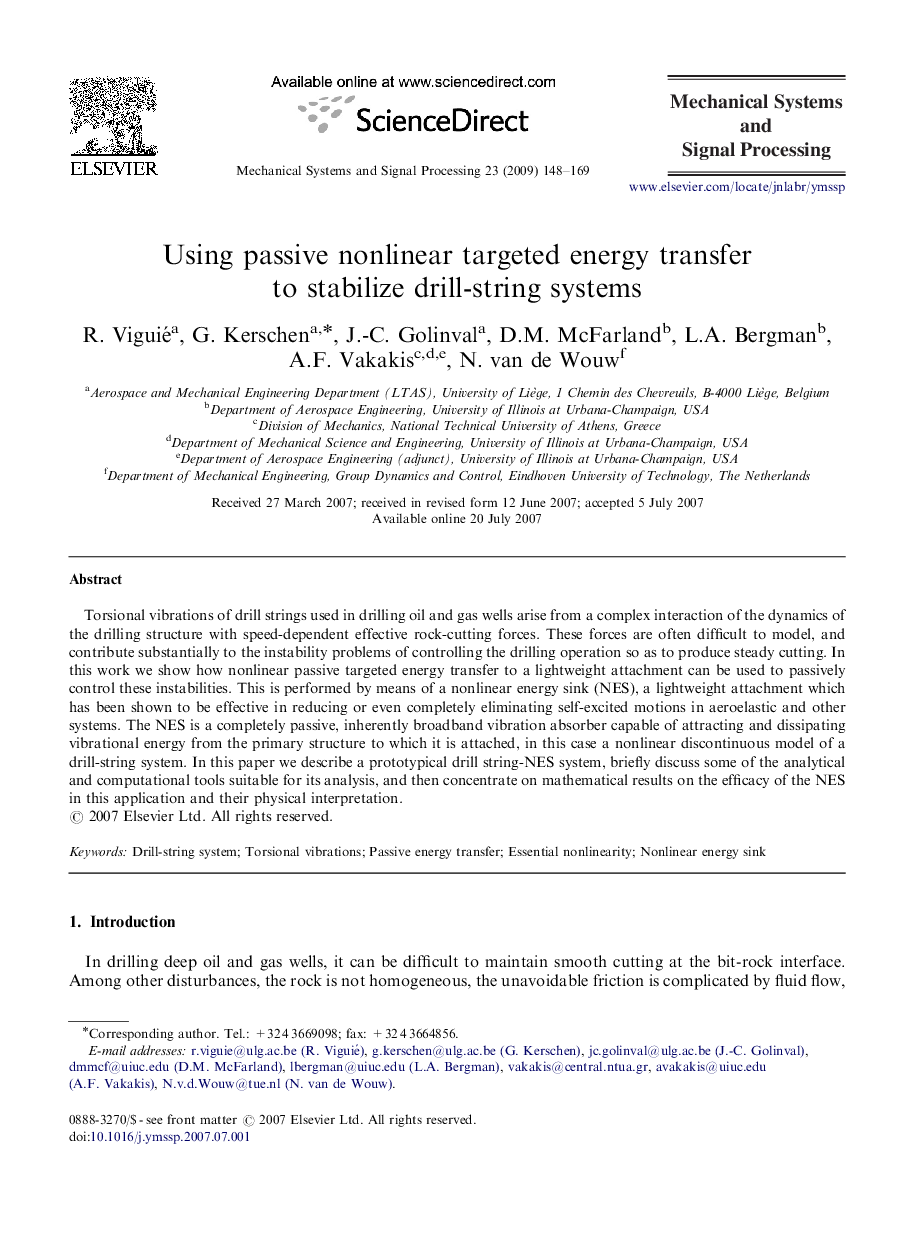| Article ID | Journal | Published Year | Pages | File Type |
|---|---|---|---|---|
| 565714 | Mechanical Systems and Signal Processing | 2009 | 22 Pages |
Torsional vibrations of drill strings used in drilling oil and gas wells arise from a complex interaction of the dynamics of the drilling structure with speed-dependent effective rock-cutting forces. These forces are often difficult to model, and contribute substantially to the instability problems of controlling the drilling operation so as to produce steady cutting. In this work we show how nonlinear passive targeted energy transfer to a lightweight attachment can be used to passively control these instabilities. This is performed by means of a nonlinear energy sink (NES), a lightweight attachment which has been shown to be effective in reducing or even completely eliminating self-excited motions in aeroelastic and other systems. The NES is a completely passive, inherently broadband vibration absorber capable of attracting and dissipating vibrational energy from the primary structure to which it is attached, in this case a nonlinear discontinuous model of a drill-string system. In this paper we describe a prototypical drill string-NES system, briefly discuss some of the analytical and computational tools suitable for its analysis, and then concentrate on mathematical results on the efficacy of the NES in this application and their physical interpretation.
